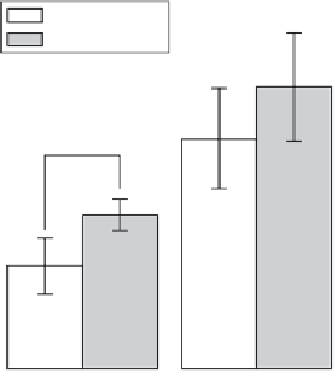Biomedical Engineering Reference
In-Depth Information
6
: Noncoated
: ACP
: OAp (heat-treated)
: HAp disk
5
4
3
2
1
0
2 days
4 days
8 days
FIGURE 7.31
ALP activity of SaOS-2 cells on noncoated, ACP- and OAp-coated blasted Ti-6Al-4V plates and HAp disk 2,
4, and 8 days after they were cultured. OAp coatings were heat-treated in a silica ampoule at 873 K for 7.2 ks.
(B-L × 16.7 = U/l, 310 K).
Many studies on in vivo evaluation of Ti implants with calcium phosphate coatings by
PVD have been reported.
(33,38,80-85)
The improvement in the bone compatibility of the Ti
implants has been demonstrated by evaluating the removal torque,
(38,80)
ultimate interfa-
cial strength
(81)
and bone-implant contact (BIC)
(33,48,80-82)
in animals. The values of removal
torque of noncoated and ACP-coated blasted Ti-6Al-4V alloy implants from the femurs of
Japanese white rabbits are shown in Figure 7.32.
(38)
The removal torque increased with the
duration of implantation, and the values for the ACP-coated implants were greater than
those of noncoated implants. It was statistically improved by the ACP coating 2 weeks
0.6
: Noncoated
: ACP-coated
0.5
0.4
*
0.3
0.2
0.1
0
2 weeks
4 weeks
FIGURE 7.32
Removal torque values of noncoated and ACP-coated blasted Ti-6Al-4V alloy implants 2 and 4 weeks after
implantation in femurs of Japanese white rabbits (*
p
< 0.05).









Search WWH ::

Custom Search